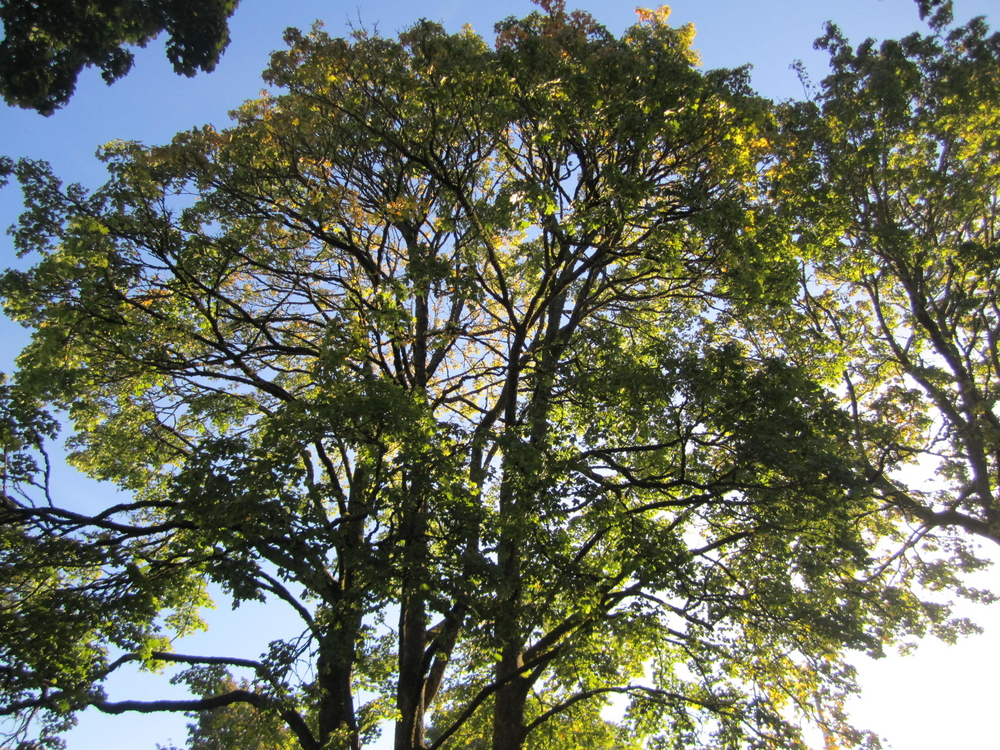Invasive Plants
We support efforts to limit the spread of invasive plant species - those that by science-based risk assessment have been shown to cause ecosystem harm or serious economic loss. Let’s be candid: some ornamental plants are among the worst offenders. In recent years, with support from the Oregon Association of Nurseries and firms like ours, the Oregon Department of Agriculture banned the sale of all English Ivy and fertile cultivars of Butterfly Bush in Oregon. Risk assessments must be done because we may not realize how invasive a few plants are among the hundreds that are introduced to ornamental ornamental cultivation annually. Sometimes a plant is just “aggressive” but not truly invasive.
In recent years we have quit growing Albizia julibrissin (Silktree) seedlings, except for rootstock purposes. We don’t offer Acer platanoides (Norway Maple - photo to right), Ailanthus altissima (Tree of Heaven) or  Berberis thunbergii (Red Japanese Barberry) seedlings due to their invasive behavior in the eastern US. All of these plants have been widely grown by seedling nurseries in the past; some still are, in fact. Invasive plants have even been distributed by Federal government agencies for erosion control or wildlife “habitat improvement”. What we don’t know sometimes results in harm to wildlife habitat and causes severe economic losses.
Berberis thunbergii (Red Japanese Barberry) seedlings due to their invasive behavior in the eastern US. All of these plants have been widely grown by seedling nurseries in the past; some still are, in fact. Invasive plants have even been distributed by Federal government agencies for erosion control or wildlife “habitat improvement”. What we don’t know sometimes results in harm to wildlife habitat and causes severe economic losses.
As more information becomes available about the invasive potential of a small percentage of introduced ornamental plants, we owe future generations an earnest commitment to quit offering them in the trade, restricted or not. Simply put, it is the right thing to do.
Regarding native plants, their advocates are often unaware of the potential economic loss of planting them in sites wholly unsuited. We must pause to remind each other that the best landscape strategy in a constructed environment is the concept of “right plant for the site", uses/wishes of the property owner, and long term maintenance budget. Many natives are unsuited for compacted soils, droughty/hot conditions near buildings and parking lots, or over-irrigated lawns. A native plant stuck into the wrong place is a bad investment of hopes and money, regardless of its “sustainability” quotient, so to speak. Often, a reasonable balance of natives and introduced ornamental plants meets the most needs reasonably and “sustainably”.
Our native Pacific Northwest dogwood, Cornus nuttallii (Pacific Dogwood), is terribly susceptible to dogwood anthracnose, as is the native Eastern US dogwood, Cornus florida (Flowering Dogwood). The introduced Asian species, Cornus kousa (Kousa Dogwood), however, is almost totally resistant and never invasive. This is just one example of how native plants are no panacea in the constructed environment of homes, city streets, parking lots, schools and commercial buildings.
Thoughtfully designed landscapes offer seasonal interest, low maintenance, and habitat diversity. Native plants attract pollinators that introduced ornamentals often do not, and the insects then attract a greater diversity of birds that feed on them. A healthy mix of well-adapted natives and introduced ornamentals is strikingly attractive seasonally, and especially educational for kids, for whom we are resource stewards.
For more information please see www.centerforplantconservation.org/invasives/invasives.asp.